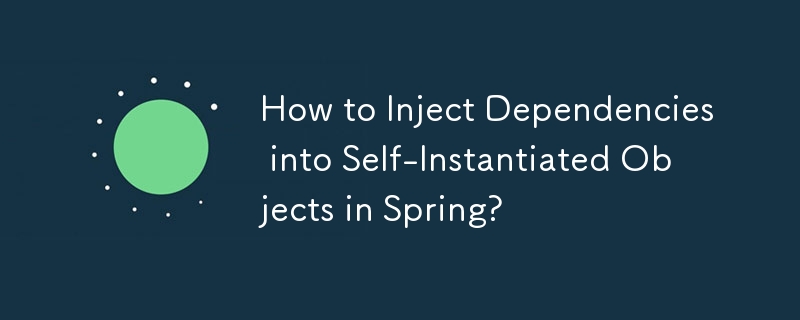

When working with Spring, it is common to manage dependencies through annotations and dependency injection. However, situations may arise where you have a self-instantiated object outside of the Spring context. In such cases, how can you still leverage Spring's injection capabilities?
Consider the following scenario:
<code class="java">public class MyClass {
@Autowired private AnotherBean anotherBean;
}
...
MyClass obj = new MyClass();</code>You have instantiated MyClass manually but want to inject its dependencies like anotherBean. How do you go about it?
Spring provides the AutowireCapableBeanFactory interface, which enables us to inject dependencies into any arbitrary object, including self-instantiated ones. To access the BeanFactory:
<code class="java">private @Autowired AutowireCapableBeanFactory beanFactory;</code>
Using the beanFactory, you can inject dependencies into your object:
<code class="java">public void doStuff() {
MyBean obj = new MyBean();
beanFactory.autowireBean(obj);
// obj will now have its dependencies autowired.
}</code>After calling autowireBean, your instantiated object will have its dependencies injected and ready for use. This approach allows you to leverage Spring's dependency injection capabilities even for objects you create manually.
The above is the detailed content of How to Inject Dependencies into Self-Instantiated Objects in Spring?. For more information, please follow other related articles on the PHP Chinese website!
 How to open vsd file
How to open vsd file
 MySQL password change method
MySQL password change method
 Yiou Exchange app download
Yiou Exchange app download
 Detailed explanation of nginx configuration
Detailed explanation of nginx configuration
 How to create a web page in python
How to create a web page in python
 How to solve the problem that Apple cannot download more than 200 files
How to solve the problem that Apple cannot download more than 200 files
 How to solve filezilla garbled characters
How to solve filezilla garbled characters
 What are the methods for restarting applications in Android?
What are the methods for restarting applications in Android?




